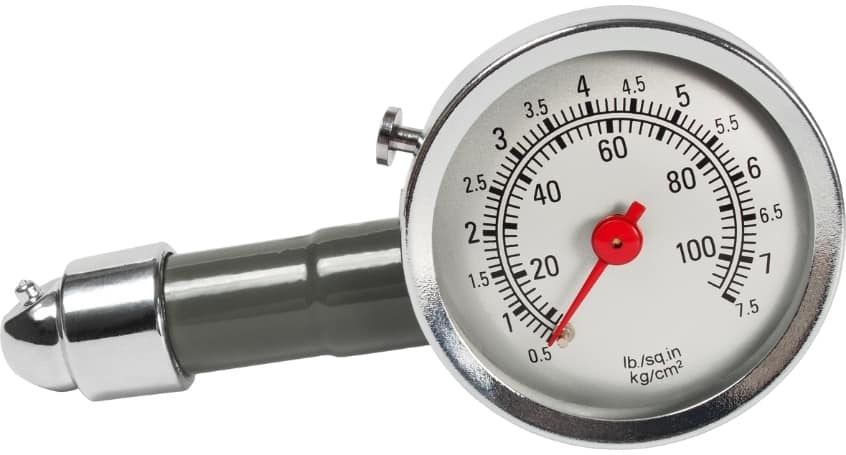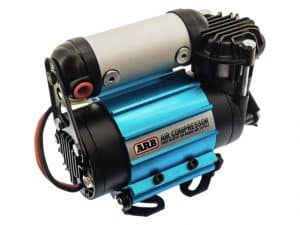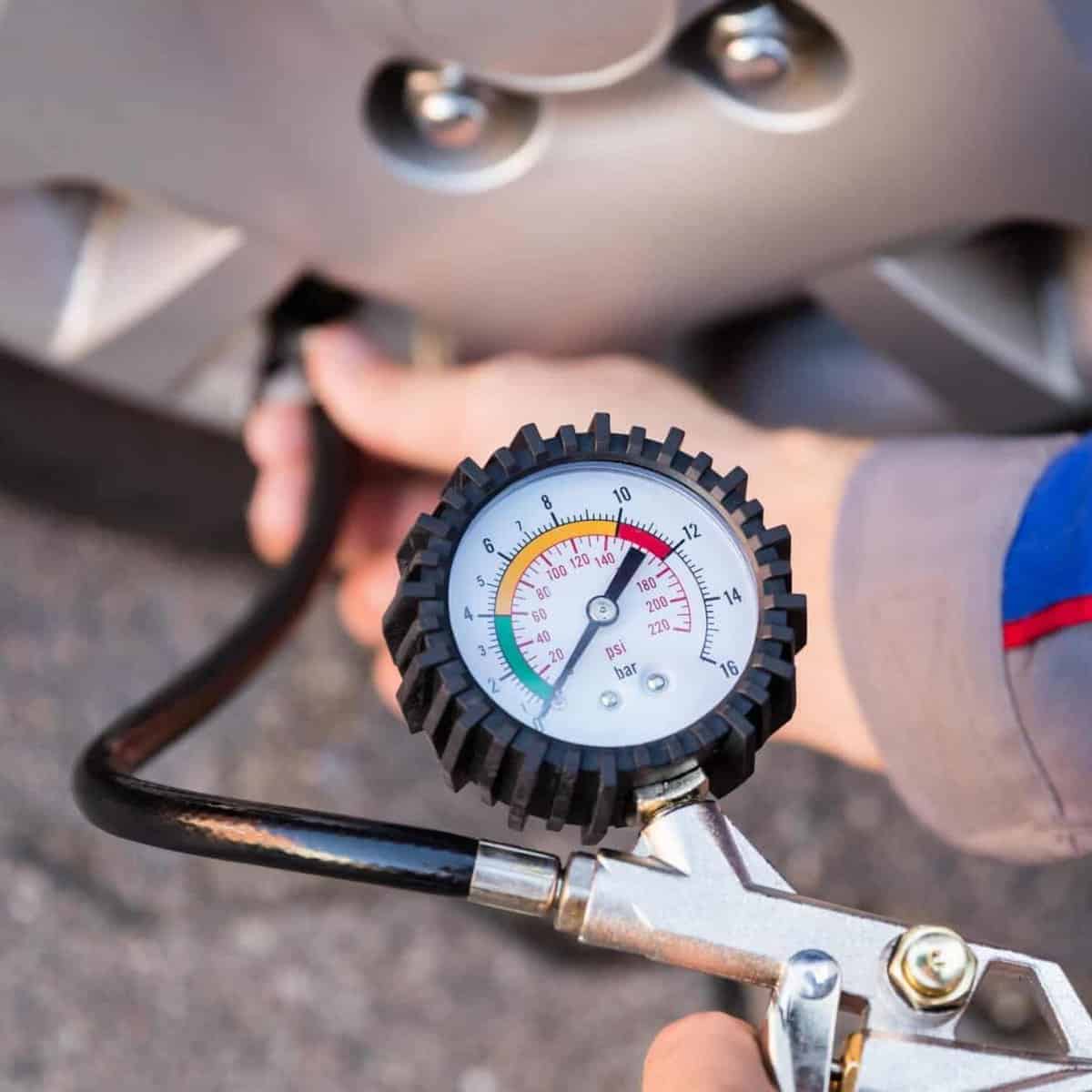Campervan Tyre Pressure: What is it and why does it matter
If you’re like most people, you probably don’t think too much about your campervan’s tyres. You might know that you need to keep them appropriately inflated, but beyond that, you might not know much about them.
The most common challenges people have with their tyres are related to incorrect pressure. This can be caused by many things, such as not knowing how to check pressure or not having the correct tools to do so. Another common challenge is adjusting the pressure correctly. It’s essential to ensure that you have the right tools for the job and follow the correct procedure.
It can be tough to keep your tyre pressures at the correct level.
It’s easy to make a mistake between knowing the maximum pressure and getting it there. This article will help you do both so that you can avoid common problems with incorrect tyre pressure.
- What is the correct tyre pressure for a campervan and why is it important to have the correct pressure
- How to check your tyre pressure
- How to adjust your tyre pressure
- Tips for keeping your tyres at the correct pressure
- What happens if the tyre pressure is too high or low
- Conclusion
- Frequently Asked Questions
What is the correct tyre pressure for a campervan and why is it important to have the correct pressure
The correct tyre pressure for a campervan is important for a few reasons. Firstly, it ensures that your tyres are performing at their best. This means that you’ll get the most out of them in terms of fuel efficiency and longevity.
Incorrect pressure can also be dangerous. It can lead to blowouts and a loss of control while driving. It’s therefore essential to make sure that your tyres are always inflated to the correct level, as specified by the manufacturer.
What is the correct tyre pressure for a campervan?
If you don’t regularly check your campervan’s tyre pressures, chances are it’s incorrect. The correct pressure for your tyres should be listed in the owner’s manual provided by your campervan manufacturer. If you don’t have the owner’s manual, look on a sticker placed somewhere on the inside of your campervan or boot door, usually inside the driver side door.
Having the correct tyre pressure for your campervan is important for safety and performance. Each caravan tyre will vary slightly, so you’ll need to refer to your owner’s manual or sticker for the correct pressure.
Why is it important to have the correct pressure?
Having the correct tyre pressure for your campervan is important for several reasons. Firstly, it ensures that your tyres perform at their best, so you get the most out of them. It also prevents blowouts and helps you maintain control of your vehicle while driving.
It is a simple check, so there’s no reason not to have the correct pressure. If your campervan’s tyres are still within the legal limits for safe driving, they’re most likely appropriately inflated.
How to check your tyre pressure
There are a few different methods you can use to check tyre pressures. The most simple one uses a digital tyre pressure gauge, although you’ll need to make sure that you’re using the correct type of gauge for your campervan’s valves if they’re different from the average car. You can also use a stick gauge or a pressure gauge on your campervan’s inner tube, although both options are more challenging to use and require you to be stationary while checking them.
The most common method for checking your tyre pressure is a digital tyre pressure gauge.
You can use a digital tyre pressure gauge to check your campervan’s tyre pressure, whether it has a steel wheel, alloy wheel or hub cap. This is because these kinds of gauges can be installed directly onto the valve stem on your caravan tyres.
With this tool, you can easily read off the exact tyre pressure for each of your campervan’s tyres with the push of a button.
While this is an easy method for checking tyre pressure, it will only work with certain types of valves on your campervan. Not all vehicles have the same kind of valve stem, so you’ll need to determine if yours are compatible with this tool before purchasing one.

How to adjust your tyre pressure
If your tyre pressures are incorrect, it’s important to adjust them as soon as possible. You can do this yourself using a tyre pump or by taking your campervan to a service station.
Some vanlifers will also install a small air compressor into the vehicle to allow them to quickly inflate their tyres without having to use a pump or take it into a garage. This can be especially useful on long trips where you’ll need to make many tyre pressure adjustments throughout the journey.
Here are 3 ways to inflate your tyres to the correct pressures.
Using a tyre pump
There are a few different methods for adjusting your tyre pressures. The simplest way is to use a small hand pump, which can be attached directly to the valve stem on your tyres. You push down on the pump until it stops; repeat this until you get the correct amount of air to your tyres.
I wouldn’t recommend this method for filling your tyres with air. It takes a while, especially if there are all four tyres, and it is really hard work.
Taking your campervan to a service station or tyre specialist
If you don’t have a tyre pump or compressor, you can take your campervan to a service station, and they’ll be able to inflate your tyres for you or do it yourself. This is also useful if you’re unsure how much air needs to be added and want the professionals to do it for you.
Pumping up your tyres to the correct pressure will make a massive difference to how well your campervan performs on the road. It’s important that you only add the amount of air recommended by the manufacturer, so it doesn’t affect other elements of your van, such as suspension or brakes.
Installing an air compressor
If you’re worried about getting your pressure right, or just want an easy way to inflate your tyres without having to use a pump, you can install an air compressor into the rear of your campervan. This will allow you to simply attach a hose and connect the inflation nozzle directly onto each tyre and press a button on the compressor unit to add the appropriate amount of air.
While this is an excellent option for ensuring your tyre pressure stays optimal, it does have its downsides. For starters, you’ll need to use it every time you check your tyre pressure, and the compressor might not be powerful enough to add enough air to fill up larger tyres.
A high-quality air compressor with an inbuilt pressure gauge is exactly what you need.
By keeping your tyre pressure at the correct level, you can vastly improve how well your campervan performs. It’s important to regularly check these levels and adjust them if necessary to stay optimal for minimum drag, maximum fuel economy and a comfortable ride.
Tips for keeping your tyres at the correct pressure
Maintaining the correct tyre pressure in your campervan is important for ensuring a safe and comfortable journey. However, it can be challenging to keep track of and adjust these levels yourself. Here are four tips for keeping your tyres at the correct pressure:

1. Keep an eye on the pressure gauge
It’s important to check your tyre pressure regularly and adjust them if necessary. You can do this using a tyre pump or compressor or by taking your campervan to a service station.
2. Add air before and not only when needed
Adding air to your tyres before a long journey is recommended, as this helps you to get the correct pressure and reduce tyre wear. You should always check your tyre pressure before long journeys, as adjusting them during a trip can be difficult and time-consuming.
4. Use a high-quality air compressor with an inbuilt pressure gauge
Using a high-quality air compressor with an inbuilt pressure gauge will make your life easier and ensure that you’re adding the correct inflation pressure to your tyres each time.
4. Ensure tyre tread is at least 2mm deep
Ensuring that your tyres have a minimum tread depth of 2mm can help prevent damage to your tyres and help you maintain tyre pressure better.
What happens if the tyre pressure is too high or low
If the tyre pressure is too high, it can cause the tyres to burst. This can be very dangerous and can lead to a severe accident.
If the tyre pressure is too low, it can affect the handling of your campervan and make it difficult to control. It can also lead to increased wear on the tyres.
What happens if the tyre pressure is too high?
Overinflation of your campervan tyres can cause several problems. Firstly, it increases the stress on the tyres, which will increase wear and tear. It also makes ride quality seem worse because it changes how much control you have over the vehicle at higher speeds. Thirdly, an overly inflated tyre is more prone to failure in case of a puncture. The extra stress will cause the tyre to fail quickly and not give you much warning.
Finally, overinflation of your tyres can cause tyre failure when cornering. This is because the increased pressure makes the sidewalls stretch, reducing their ability to grip the road.
What happens if the tyre pressure is too low?
If your tyres are under-inflated, the air will escape more quickly, so you’ll need to inflate them more often. Over time, this can lead to significantly increased wear on the tyre’s treads, which will shorten their life span. This is probably one of the worst things that can happen to your tyres because it’s due to human error and can easily be avoided. Under-inflation also leads to the tyre overheating, which causes it to fail. This can cause you to lose control of your vehicle, like when cornering or driving up a hill. Additionally, this may result in tyre damage that is expensive or even impossible to repair.
Conclusion
Maintaining the correct tyre pressure in your campervan is important for ensuring a safe and comfortable journey. It can be difficult to keep track of and adjust these levels yourself, but by following our four tips, you can make it easier. Additionally, it’s important to know what happens if the pressure is too high or low so that you can take appropriate action. Use the above-recommended tyre pressure chart as a guide to ensure your tyres are always at optimal pressure.
However, it is essential to remember that this chart is for informational purposes only. It’s not a replacement for regularly checking your specific campervan tyres and adjusting the pressure accordingly.

